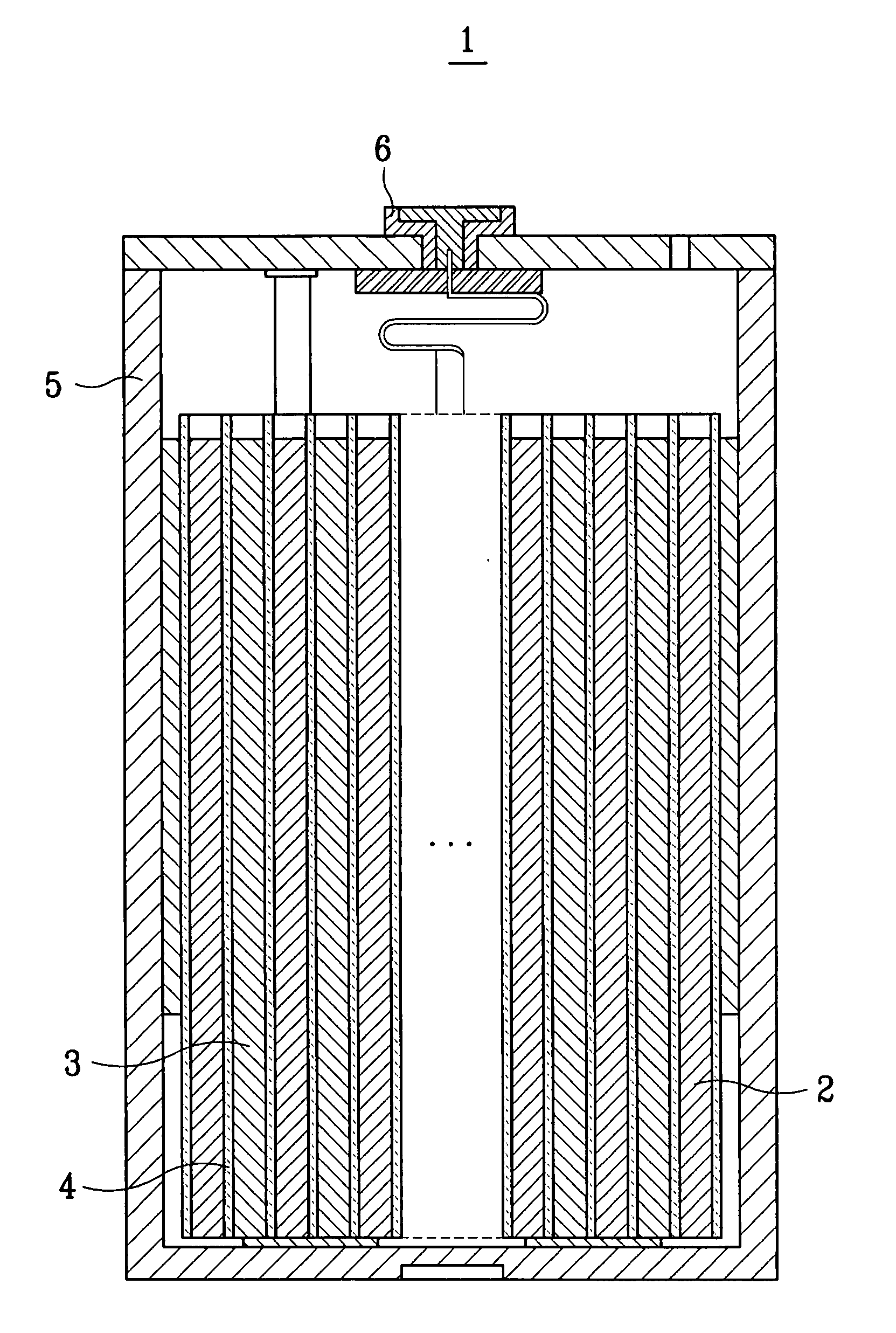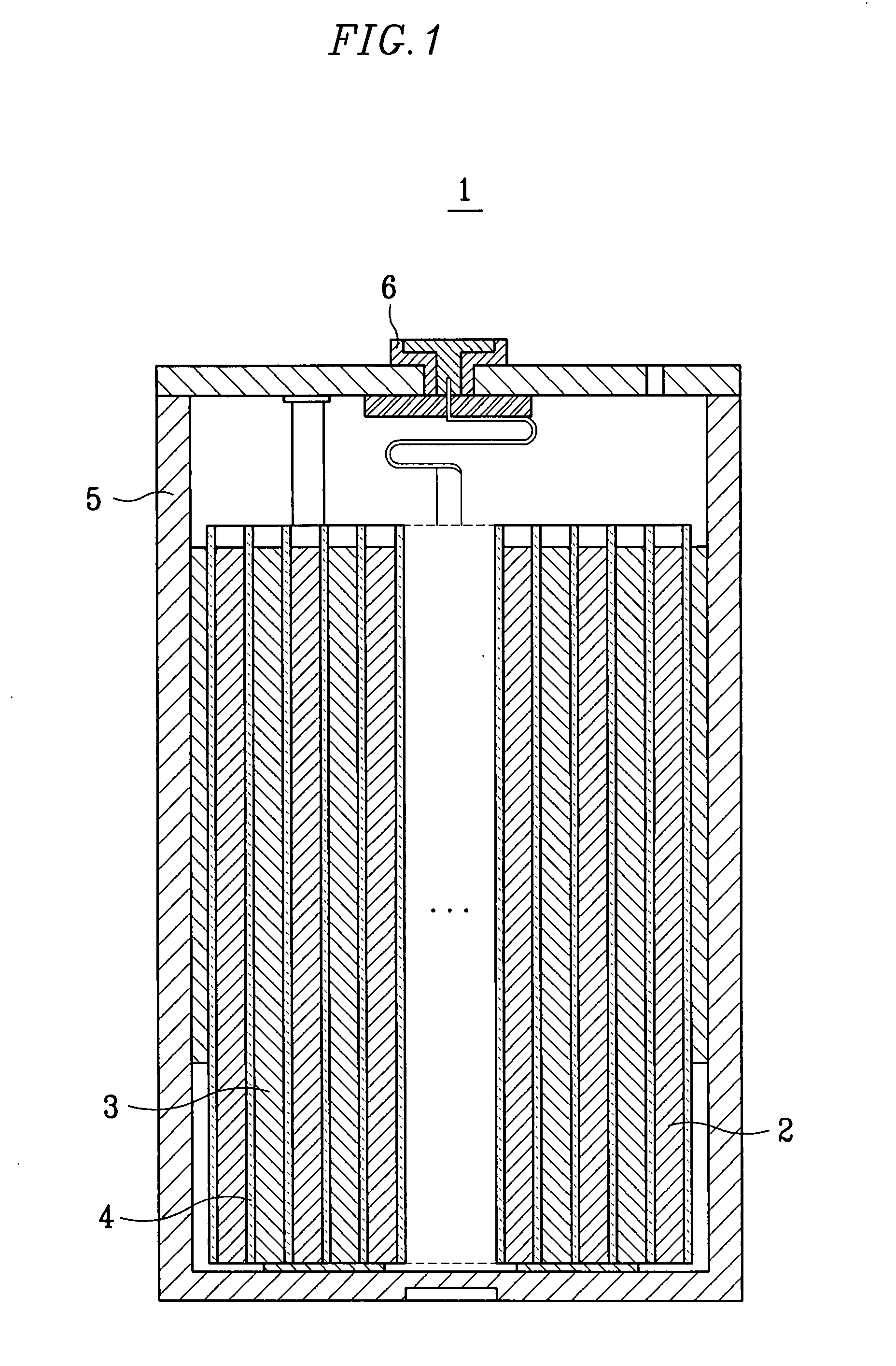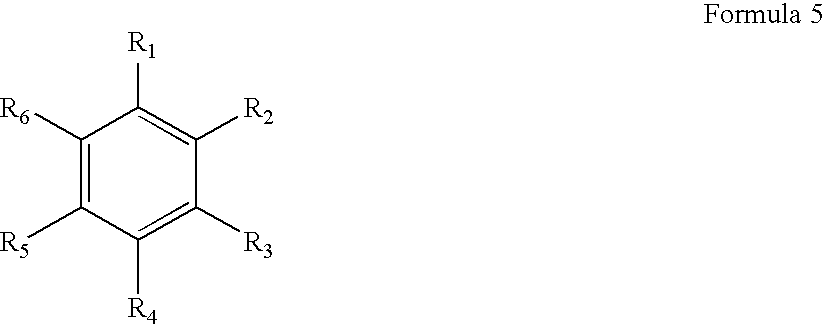Rechargeable lithium battery
a lithium battery and rechargeable technology, applied in the manufacture of cell components, final product manufacturing, electrochemical generators, etc., can solve the problems of critical defects, low energy density per unit volume, high initial irreversible capacity of up to 50%, etc., and achieve the effect of improving the rechargeable lithium battery
- Summary
- Abstract
- Description
- Claims
- Application Information
AI Technical Summary
Benefits of technology
Problems solved by technology
Method used
Image
Examples
example 1-1
[0096]A mixture was prepared by mixing CO3O4, Li2CO3, and Mg(OH)2 in water at a molar ratio of 1 / 3:1 / 2:1 / 50. The mixture was dried at 110° C. for 4 hours, and then underwent heat treatment again at 400° C. for 8 hours to prepare a core formed of LiCo0.98Mg0.02O2 having an average particle diameter of 13 μm.
[0097]20 g of the LiCo0.98Mg0.02O2 core material having an average particle diameter of 13 μm was added to 10 Ml of a 0.1 wt % Mg2P2O7 solution, mixed, and dried at 130° C. for 30 minutes. The dried powder underwent heat treatment at 400° C. for 5 hours to prepare a positive active material including a surface treatment layer including a Mg2P2O7 compound on the surface of LiCo0.98Mg0.02O2.
[0098]The above prepared positive active material, polyvinylidene fluoride (PVDF) as a binder, and carbon (Super-P) as a conductive agent were dispersed and mixed in N-methyl-2-pyrrolidone at a weight ratio of 96:2:2 to prepare a composition for forming a positive active material layer.
[0099]The ...
examples 1-2 to 1-45
AND COMPARATIVE EXAMPLES 1 to 7
[0102]A rechargeable lithium battery was fabricated by the same method as in Example 1-1, except that the kinds of the doping element M and the surface treatment compound and the amounts of LiPF6 and LiN(CF3SO2)2 in the core material of the positive active material were diversely changed as shown in the following Tables 1a to 1c.
[0103]The rechargeable lithium battery cells fabricated according to Examples 1-1 to 1-45 and Comparative Examples 1 to 7 were charged at 0.2C and discharged at 0.2C once (formation process) and then charged at 0.5C and discharged at 0.2C once (standard process).
[0104]The cycle-life characteristics of the battery cells were estimated after the battery cells were charged at 1.0C and discharged at 1.0C 300 times at 60° C. Then their storage characteristics were estimated by standing the lithium rechargeable battery cells at 60° C. for two weeks and measuring their open circuit voltage (OCV). The results are presented in the follo...
example 2-1
[0107]A mixture was prepared by mixing CO3O4, Li2CO3, and Mg(OH)2 in water at a molar ratio of 1 / 3:1 / 2:1 / 50. The mixture was dried at 110° C. for 4 hours and then underwent heat treatment again at 400° C. for 8 hours to prepare a core formed of LiCo0.98Mg0.02O2 having an average particle diameter of 13 μm.
[0108]20 g of the LiCo0.98Mg0.02O2 core material having an average particle diameter of 13 μm was added to 10 Ml of a 0.1 wt % Mg2P2O7 solution, mixed, and dried at 130° C. for 30 minutes. The dried powder underwent heat treatment at 400° C. for 5 hours to prepare a positive active material including a surface treatment layer containing the Mg2P2O7 compound on the surface of LiCo0.98Mg0.02O2.
[0109]A composition for forming a positive active material layer was prepared by dispersing and mixing the above prepared positive active material, polyvinylidene fluoride (PVDF) as a binder, and carbon (Super-P) as a conductive agent in N-methyl-2-pyrrolidone in a weight ratio of 96:2:2.
[0110]...
PUM
| Property | Measurement | Unit |
|---|---|---|
| particle diameter | aaaaa | aaaaa |
| mass density | aaaaa | aaaaa |
| mass density | aaaaa | aaaaa |
Abstract
Description
Claims
Application Information
 Login to View More
Login to View More - R&D
- Intellectual Property
- Life Sciences
- Materials
- Tech Scout
- Unparalleled Data Quality
- Higher Quality Content
- 60% Fewer Hallucinations
Browse by: Latest US Patents, China's latest patents, Technical Efficacy Thesaurus, Application Domain, Technology Topic, Popular Technical Reports.
© 2025 PatSnap. All rights reserved.Legal|Privacy policy|Modern Slavery Act Transparency Statement|Sitemap|About US| Contact US: help@patsnap.com



